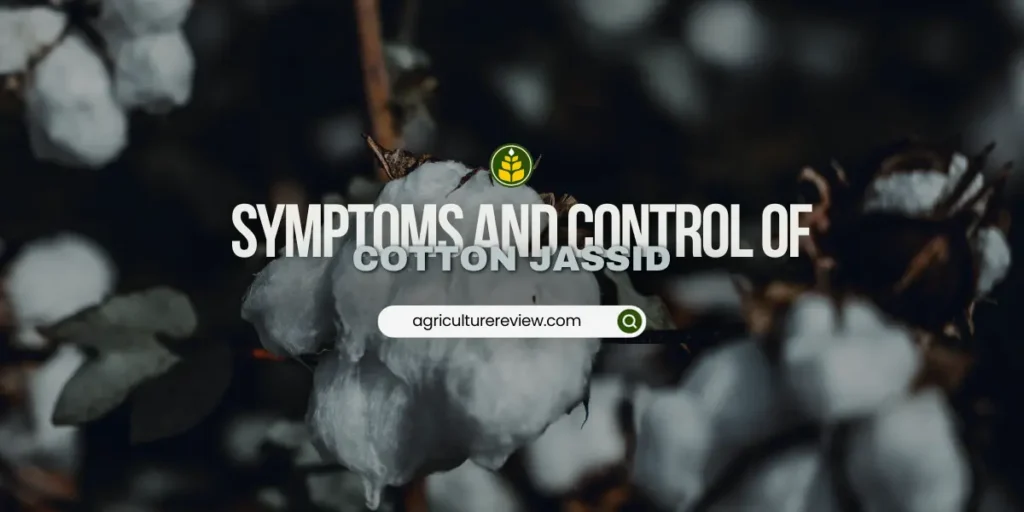The most effective control of cotton jassid is by using Confidor in the cotton field. During a study on the effects of pesticides on cotton jassids, it was found that applying 0.2% Confidor solution helped to get 72% mortality of cotton jassids within 72 hours after application of the pesticide.

Various insecticides such as SoftStart (acetamiprid), Confidor (imidacloprid), Trophy (diafenthiuron), Hy-Flow (pyriproxifen), and Pirate (chlorfenapyr) of 0.1% and 0.2% concentration were used under controlled environment during the experiment and it was found that 0.2% solution of Confidor showed the highest mortality rate, exceeding 72%.
Table of Contents
Cotton Jassid (Amrasaca biguttula)
Cotton Jassids is a sap-sucking pest that is considered one of the most destructive pests of cotton crops. The winged adults can be 3 mm long and during winter the body color is reddish tinge while in summer it is greenish yellow. The female adult lays around 15 yellowish eggs on the undersurface of the leaves, within 4 to 11 days, the egg hatch and light green, translucent, wingless, wedge-shaped nymphs come out of the eggs and start sucking cell sap.

Within 21 days they reach the winged adult stage after passing 6 stages of growth and then these adults live for another 7 weeks during which they feed on the plant sap juice and lay eggs. Female jassids can breed throughout the year except in winter. Adults can also migrate and feed on potatoes, eggplants, tomatoes, etc. and within a year they complete 7 generations.
Symptoms Of Cotton Jassid
When a cotton field is infested with cotton jassid pest, then a farmer can identify by looking at these common symptoms:
- The leaves of the cotton plant turn pale and then rust red.
- Gradually margin of the leaves starts curling downwards, leaves dry up and fall to the ground.
- In later stages, cotton balls also get dried up and fall on the ground.
Control Of Cotton Jassid
However, the most effective control of cotton jassid is applying 0.2% Confidor, but experts believe that farmers should also follow other treatment practices such as cultural, organic, and biological control methods. In a hectare of cotton field farmers should apply 100 ml of Confidor dissolved in 500 liters of water.
Cultural Control Methods
To control cotton jassids, farmers should cultivate jassid pest-resistant cotton varieties on their fields and strictly monitor pests in their fields so that they can be controlled effectively during the initial stages of infestation when adults enter the field to feed and lay eggs because, during the nymph stage, they are most susceptible to insecticides.
Moreover, farmers should also reduce the use of nitrogen-based fertilizers during the infestation as it can encourage the growth of the jassid population. Removing weeds from time to time also helps to reduce the chances of jassid infestation.
Biological Control Methods
To control cotton jassids, farmers can introduce biological predators of jassids such as Chrysoperla carnea (lacewing), Scymnus sp, and Anagrus atomus in their cotton fields. However, farmers can not use chemical methods and biological methods parallely. They can start with biological control methods and accordingly based on results can adopt other control methods or can directly go for chemical control methods.
Organic Control Methods
Farmers can spray neem oil solution on their cotton fields to control jassids. However, this method is not so effective in controlling them, instead, they can also use neemastra or agneyastra to control this pest organically. Integrated Pest Management is effective in controlling this pest efficiently.
If you have any queries, ideas or suggestions, then please comment below. You can also connect with Agriculture Review on Facebook, Instagram, Koo and WhatsApp Messenger.





